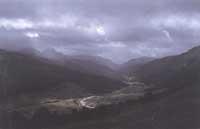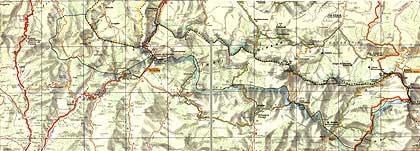Hidden Faces of Irati
1992/11/01 Albisu, Alex Iturria: Elhuyar aldizkaria
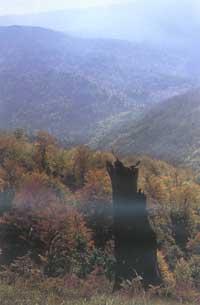
Many years ago, throughout the Basque Country, forests dominated any landscape. What is called industrialization did not come until then and each family or village used wood for the construction or manufacture of objects. The wooden cut was also more selective, since it was selected and had to remove the trunks with animals. Therefore, forests never suffered a true imbalance or a true disproportion, and the life of forests was dispersed over the centuries.
This idyllic duration was not forever and over the years, the need for wood increased by changing or disappearing the structures of most forests. For this reason, the first lands that were stripped were the most comfortable for the extraction of wood, so that most of our ancient forests disappeared leaving small testimonial islands.
Therefore, the most extensive forests that we can find in Euskal Herria are found in the most remote or less industrialized territories.
One of them has always been the western part of the Pyrenees, including Iparralde and Hego Euskal Herria.
To the north, the interesting forest of Arbailleta, the elegant forests of Kakueta and Holtzarte or the beautiful north of the forest of Irati. In the south, respect for forests has been much higher and, for example, we could go smoothly from Aralar to the slope of Mount Ori.
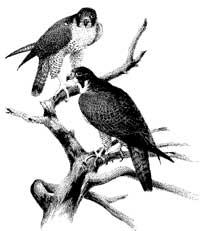
But in this long line of forest, composed of hayeds (at least for the most part) and previously mentioned, we find great ups and downs, both in surface and in forest quality.
Therefore, if we crossed these mountains in slope, we would see that there are great forests to compare with the surface of the forest of Irati.
Therefore, the areas heard on the forest of Irati must be considered as myths.
So that we understand the reason for this myth and making clear the wooden reserve that the Basque Country still has (speaking civilly, of course), we will pass to the forest of Irati that occupies us.
The forests of Irati have been surrounded by the mythical clothing, both in the French state and in Spanish. A clear example of this would be to use almost always the nickname “jungle”, creating in mind the idea of lands of enormous extension and great virginity. And the truth is that, from all over Europe, there is no article that does not consider surface for the first or second, as I know, in Spanish literature. But no data is given on the real surface or other forests or lands that we might consider comparable.
But first of all, we should define what we mean by Irati forest, since, as I said before, we could not consider it as an isolated forest because in the West it submerges all over the Atlantic slope. The road from Irati to the East also presents continuity in Roncal lands. Normally only Irati forests are considered the high areas of the Irati River.
Following the custom and starting from the east, the relationship of mountains and surroundings surrounding the Irati forest would be as follows:
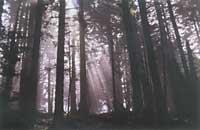
Azalegi-Arritxilar, that we will find to the right of the farm Larrau, located above the village of Orbaizeta; Mendizar, tip of the upper branch of the reservoir of Irabia; from this point and following the border, to mount Sommet d’Occabe (name invented in France); The casetas of Irati, the following ones that make tourist border, and from these little mountain. If the customs do not appear, perhaps the hill of Olloki; from there all the mountain range of Abodiko; then the mount Idorrokia; after crossing the road, Goñi iburu; to the left, Auztarri; and finally, Orbaizeta, following the starting point in the farms of Larrau. Anyway, if you can get some botanical map of Irati, much better.
You will realize, therefore, that the area of joke is not the region. But with some data, we will see it clearer. If we look at the highest region of the Irati river, what is known of the Irati forest would cover 12.404.7 ha, with bare zones sometimes. It is not true that it is the largest forest in Europe, since in Scandinavia or Russia we find larger coniferous forests. But it is one of the biggest hayeds in Europe and perhaps the biggest hayedo.
Together with the economic strength that these hayeds harbor, man appears bound. And the thirst of man, of wood and after the coin, these extensive forests will express us with clarity.
No one knows when the logs that were transported by water force began to be cut. If they were initially transported individually, then “soul-days” were used both in the Irati River and in other surroundings.
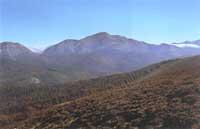
First error of this territory XVIII. It happened in the nineteenth century due to the offer of salazar to the government. The government (of course Spanish), could remove as many trunks as they wanted without flakes. The logs extracted, the largest and slender, ended up being of one type: the firs.
The government, without contributing anything in return, would provide the “Navy” with large and long trunks.
With this exploitation, around 1785, the structures of collection and cutting of these huge trunks would be consolidated. In 1840 the mountain was leased for 30 years to the Irati Society, giving continuity to this long exploitation.
However, until the middle of the last century, Irati could be considered a region very little damaged, since it was easier for lovers of wood and only river margins were used.
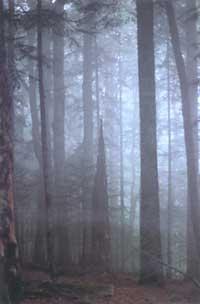
Therefore, the infractions committed by the previous ones did not have great importance, taking into account the entire forest.
But XX. In the twentieth century there was a real industrialization in the jungle of Irati. In 1907 it was built by Domingo Elizondo de Aribe, IRATI, S.A. This built the ferns to cut the wood and built reservoirs to generate electricity in the river. And as a sign of the importance of this company, we will say that it put the railroad. At present and in case this company recently disappears, Irati's lands are exploited according to a plan, changing the beech plants annually. Therefore, the image of virginity that people have over the forest of Irati should be definitively buried.
The Irati forest has been exploited for a long time, but taking into account the violations suffered by the forests of other regions, today we must consider it a privileged forest. The Irati forest, especially because of its remoteness, can be said that, while many other forests have suffered the influence of the axe, in general (and compared to other forests), it only has a punctual exploitation. The word “selhan” continues without completely losing its dignity.
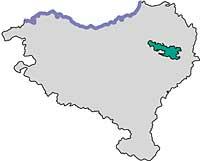
Therefore, the forest of Irati is not a vegetable sheet without cuts that have put us in the head. Inside it houses areas without trees, either for the axe or for the livestock.
From time to time we will find repopulation forests (especially next to the reservoir) and these revegetations, due to their darker colour in the landscape, are easily noticeable in the wooded section. These replantations make clear the strength of the human hand. In bird's eye view, these geometrical or well-structured plantations, which look like a giant axe pan, are not the least damage of this forest.
In fact, recently extensive paths have been opened and the scars that the Irati forest has suffered have been abundant and remarkable.
For example, these broad paths that open through the forests have already left about 150 km long for the forest. These trails or “tracks” have been built for the extraction of wood, for the communication of the casetas or, finally, for the influence of tourism.
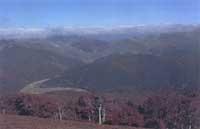
In addition, and since the number of kilometers mentioned above is optimistic, we must mention two of the main scars found in this forest: one from Otxagabia and passing through the mountain range of Abodi, which penetrates to the heart of the forest and ends in the chapel of the Virgin of the Nevis. The other is the one that embraces the skirt of Mount Ori.
These mentions are important for the influence they can have in the future for these wonderful forests. That is, the existence of these large roads can be an excuse and a facility to introduce in the future any type of tourist structure. It is not for nothing to speak, because far away, in Irati, we have the booths of Irati and the "Txalet Pedro", with their black roads. The lack of respect for the environment that these constructions entail will make us more aware of it. Cafes, souvenir shops where you want, ski rental shops, supermarket; Coca Cola, Fanta, Kas, Sprite, ...; and to the mind will arrive a typical phrase without just realizing: Why all this, in these environments so calm and spectacular?
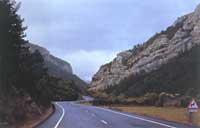
It is not difficult to realize where they want to take us or the direction of society, but the capitalization of these lands that have preserved the miracle of the absence of external pollutants (consumerism run over) would be, without a doubt, regrettable.
For example, and if we go to the impressive German “Ohian Beltz”, we will meet the longest forest in Europe. This is what they say in the books. And it can be so... but once there, we can feel a great disappointment, because the forest is a thousand forests and we will see many roads. We will see chalets, hotels, etc. And then we will realize the myth of this “Black Forest” and the steps that each people must take in order not to happen. The steps are fast and accurate. Thus we can see in a complete way this authentic ecological lung that we have in Navarre.
Perhaps only in this way do we realize the disaster of those “necessary attacks” that are carried out throughout Euskal Herria, of the treatment that the region of Irati really needs and, at least initially, of the need to distrust before the artificial name of natural park.
Irati is located about 60 kilometers from the coast, but despite the proximity of the Cantabrian Sea, we are immersed in Pyrenean lands. Its climate is Atlantic Pyrenean.
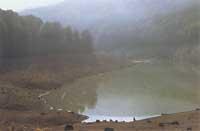
Due to the abundance of rainfall of water, they are less costly and many are collected in the form of snow. In the vicinity of the Irabia reservoir, for example, there will be an annual drop of approximately 1.773.4 l/m2 of water. Although the snow often covers all the lands of Irati, it will be easier to see Ori, Abodi and Ortzanzuri dress up.
Given the abundance of rainfall, the network of rivers originated in the lands of Irati is very important or progressive. Many of these small streams are collected in the reservoir of Irabia.
In addition to the snow, the height of these lands can be appreciated by the cold winter it supports, and also the days of ice, in which in zones of about 1.000 meters more than 100 per year is reached. We know that on Mount Ori, with 100 meters of height, the temperature drops 0.6 °C. Therefore, having more than 200 days of ice in high areas should not surprise us.
On the other hand, summers are temperate and usually without much heat. Annual average level: 9 °C, both west and south, and around 7 °C, or lower, in the mountains of Ori and Abodiko.
We know that the forest is extensive, but another important factor related to the quality of the forest is closely associated with it.
The myths, one of them on the height of the trees of the forest of Irati.
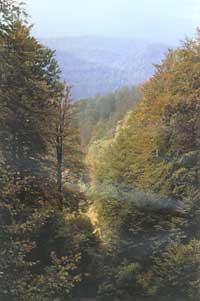
In every book it is said that the height of the beech is up to 50 m and that of the sizes is up to 60 m. All this can lead to an error. Unfortunately, today it is not true in the districts of Irati. But the maturity of the whole tree mass is still excellent, and above all it is seen on a small plot that has not yet been exploited. In fact, on the slopes of Lizardoia there is a virgin region that recalls the ancient forests.
It is also necessary to take into account the animals, and with the exception of the large predatory mammals that lived until recently (wolf, bear and lynx), live other animals that host well-developed forests: deer, roe deer, bearded vultures, herons, wild boars and wild cats, among mammals and falcon, the pilgrim falcon, the milanos, the griffon vulture, the white vulture and the vulture.
Rarely can we find a black or broken eagle flying.
But here too Sunday is entering more, and in the surroundings of the broad roads, if we do not want to meet the garbage and the crowd, the smartest thing is to discard the usual program of people. In this way, we will discover the beauty and warmth of the forest in its greatness, perhaps unlike other places.

Gai honi buruzko eduki gehiago
Elhuyarrek garatutako teknologia




